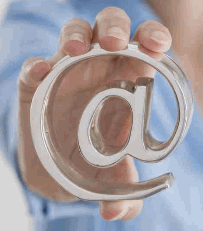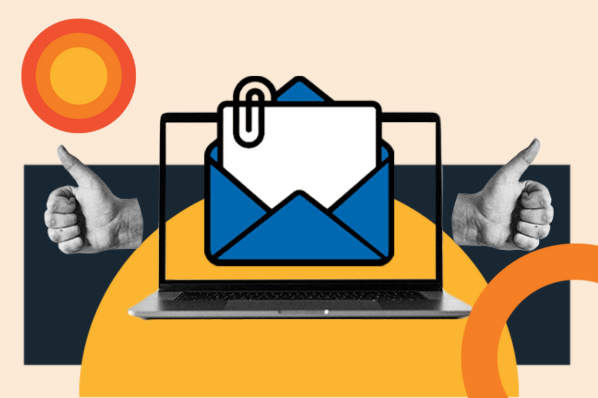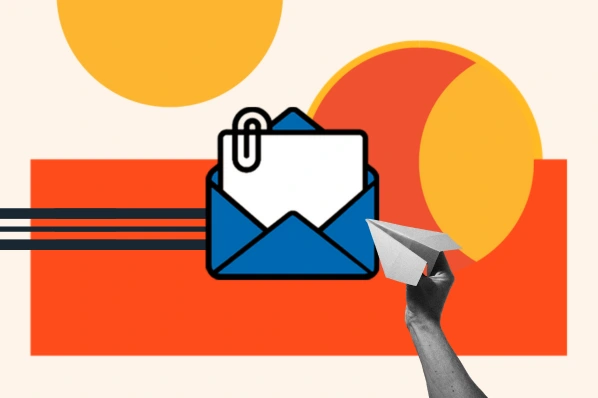 This is a guest blog post written by Hunter Boyle. He is the senior business development manager for AWeber and a seasoned optimization and content marketing strategist. Hunter also speaks and blogs about multichannel marketing with an emphasis on SMBs and nonprofits.
This is a guest blog post written by Hunter Boyle. He is the senior business development manager for AWeber and a seasoned optimization and content marketing strategist. Hunter also speaks and blogs about multichannel marketing with an emphasis on SMBs and nonprofits.
We all know that today, high quality content that helps prospects and customers solve business problems is the most effective type of marketing.
And no matter which channels deliver that help, from blogs and social sites to webinars and whitepapers, email is still playing an integral role in cultivating those business relationships.
When asked about their top email marketing priorities for 2012 in a recent MarketingSherpa survey of more than 2,700 email marketers, "delivering highly relevant content" ranked first among large and mid-sized companies (70% and 62% respectively), and second among small businesses (71%), surpassed only by "growing and retaining subscribers" -- which, of course, largely depends on content also. This is great news, because it suggests that email will continue to improve in 2012.
The trick is, how do we keep making those content-driven email relationships better and more profitable for all involved, marketers and customers alike? We set out to answer that question, and the result was a new special report ebook and email series that explores five key ways to maximize your email marketing:
1. Approach List Building Strategically
There's no shortage of tactics for growing email lists, but it's all too easy to get caught up in them at the expense of a fully developed plan. Does your email strategy account for how and when to apply various tactics, when to test others, and a consistent process for analysis and adjustments? With less than a third of email marketers saying they send relevant emails to segmented audiences with a clear conversion goal, this is an area ripe for improvement.
2. Set Clear Expectations for Subscribers
As marketers, we often don't see the disconnect between our perception of how our offers are presented and how prospects see and understand them. In particular, short email forms that simply ask for name and email and offer little context or information about send frequency, specific content options, or address validation, tend to generate larger lists but include lower quality contacts. We may know what's behind our opt-in form, but how clear is it really to a first-time site visitor who got served a pop-up window before even reading the page? That's why it's critical to set expectations with your potential subscribers so they know exactly what they're signing up for and exactly what the value is.
3. Segment Lists to Match Your Priorities
Whether you're segmenting lists based on behaviors such as opens, clicks, and downloads (or lack thereof); on stage in the sales cycle; or on more specific demographic data, the bottom line is that segmentation is a huge factor in establishing relevance. Matching segments to your organization's ideal customer personas makes your content more engaging and your offers and campaigns more likely to succeed. So why are only about half of email marketers using these techniques regularly?
4. Automate Your Campaigns
Thank you, welcome, and transactional emails are widely used by organizations of all sizes, but research shows a significant drop-off in other types of automated messages. Lead nurturing, drip campaigns, re-engagement campaigns, and auto-responders make it easier for marketers to create email series with the intent of building relationships; however, these types account for roughly one-third or fewer of the emails sent by survey respondents. If your content mix includes "evergreen" information such as how-to articles or training videos that won't lose their news value, marketing automation is definitely an option worth exploring.
5. Optimize and Test Regularly
To quote the MarketingSherpa report, "Continuous experimentation is the quickest path to peak performance." Yet only 28% of small businesses regularly test and optimize email messages. Mid-sized and larger organizations fared better, but still only around half test regularly. Deadlines and full workloads are a common culprit, but let's say you run a test that yields an 18% lift in response -- you'd probably find time to test more consistently next time, right? Interestingly, subject lines are among the most popular tests, yet they often produce the smallest gains compared to other areas such as landing pages and target audiences. Don't be afraid to test various elements of your email marketing efforts to optimize email performance.
The tips above are a starting point, but for more detailed charts from the survey plus recommendations and links to case studies, how-to articles, and online tools related to these five steps, you'll want to get the complete special report ebook and email series. MarketingSherpa and AWeber are providing the series for free through December 31.


![30 Brilliant Marketing Email Campaign Examples [+ Template]](https://www.hubspot.com/hubfs/email-marketing-examples_29.webp)

![How to Write a Marketing Email: 28 Tips for Writing Compelling Email Copy [+ HubSpotter Insights]](https://www.hubspot.com/hubfs/Untitled%20design%20%2840%29.jpg)
![16 Great Examples of Welcome Emails for New Customers [Templates]](https://53.fs1.hubspotusercontent-na1.net/hubfs/53/36_Welcome%20Email%20Templates.jpg)




